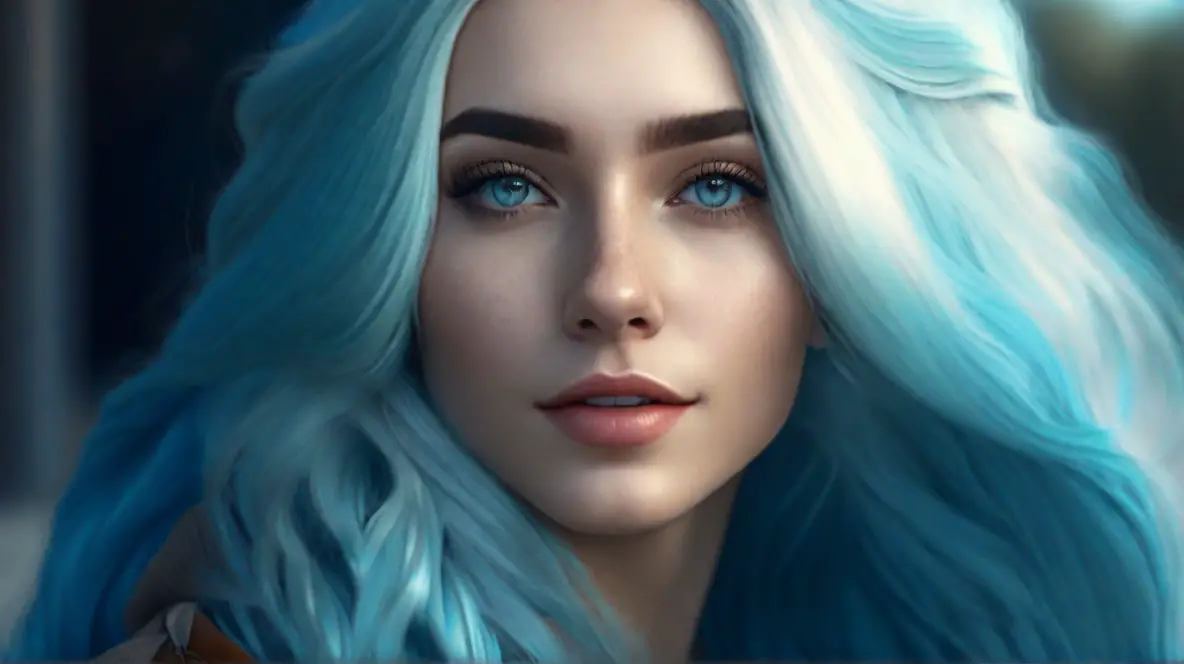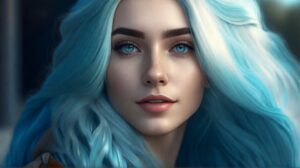In the realm of AI-generated artistry, Negative Prompts in Stable Diffusion have opened up new horizons for creative expression. While the process of generating images has become more accessible, achieving the desired results can still be a challenge. But fear not, as there’s a potent tool in your creative arsenal – “negative prompts.” In this article, we will delve deep into the world of negative prompts, demystifying their functionality and exploring how they can elevate your AI-generated images to a whole new level.
Mastering Negative Prompts in Stable Diffusion
Imagine instructing an AI not by telling it precisely what you want in your image, but by letting it know what you don’t want. This is where the concept of negative prompts becomes significant. Think of them as your artistic wand to conjure images free from unwanted elements. With a simple command like “No apples in the picture,” you can steer the AI towards your creative vision.
The Practical Benefits of Using Negative Prompts.
Negative prompts can be your best friend when you find yourself at odds with your AI-generated images. They act as a guiding compass, helping you navigate towards your desired outcome. Let’s explore how negative prompts can be practical:
1. Eliminating Unwanted Elements:


Picture this – you’re crafting a serene beach scene, but the AI insists on populating it with unsightly beach umbrellas. Instead of grappling with frustration, you can assert your creative control by saying, “No beach umbrellas, please.” The result? Your beachscape remains umbrella-free and harmonious.
2. Fine-Tuning Styles:


Sometimes, your AI-generated image may lean towards a style that doesn’t align with your vision. If you desire a more realistic touch to your artwork, you can simply express, “Make it look realistic,” and your AI will adapt accordingly.
3. Enhancing Image Quality:


When you encounter issues like excessive noise or grain in your images, you can employ negative prompts to fine-tune the details. A straightforward command like “No noise” will prompt the AI to produce a cleaner and sharper image.
Illustrating the Power of Negative Prompts
Let’s embark on a visual journey through some practical examples of negative prompts in action:
1. Removing Unwanted Objects:


Imagine creating a picturesque forest scene, and your AI insists on adding unsightly industrial structures. By wielding a negative prompt like “No factories,” you maintain the pristine beauty of your woodland.
2. Adjusting Styles:


Perhaps your AI-generated artwork leans towards a whimsical cartoon style, but you envision it in a more lifelike portrayal. A simple instruction such as “Make it more realistic” can prompt your AI to shift its artistic approach.
3. Crafting Clean Details:


If your image suffers from excessive blurriness, you can rectify it by stating “No blurriness.” This ensures that your AI refines the image’s focus and delivers a clearer rendition.
Evolution of Negative Prompts
Just as technology evolves, so do negative prompts. Modern iterations of AI models, like Stable Diffusion v2.1, have elevated the effectiveness of negative prompts. They comprehend your directives with greater precision, making it easier than ever to manifest your creative vision.
Universal Negative Prompts
In your quest for AI-generated perfection, consider these universal negative prompts – versatile tools that can enhance your creative process across various scenarios:
- distortions
- poor quality
- unnatural colors
- worst quality
- poor quality
- low quality
- low res
- blurry
- text
- watermark
- logo
- distorted
- pixelated
- out of focus
- grainy
- poorly rendered
- skewed
- unnatural colors
- poor lighting
- unclear
- low resolution
- oversaturated
- monochrome
- disfigured
- abnormal proportions
- duplicate elements
- cluttered
- unrealistic
- chaotic
Unlocking the Full Potential of Negative Prompts
As we conclude our exploration of negative prompts, it’s essential to recognize their role as indispensable allies in your creative endeavors. Whether you’re sculpting your ideal landscape, refining styles, or enhancing image quality, negative prompts provide the means to bring your artistic vision to life. Embrace this powerful tool, and let your imagination soar as you craft AI-generated masterpieces that resonate with your unique creativity.
Read This: Dreambooth Guide for Stable Diffusion
Final Thought
In the world of AI-generated art, negative prompts are your trusted companions. They empower you to shape your creative vision with precision, whether by excluding unwanted elements, adjusting styles, or enhancing image quality. The next time you embark on an AI-driven artistic journey, remember the magic of negative prompts. They are the keys to unlocking your full creative potential. So, go forth and create with confidence, knowing that your AI will faithfully bring your visions to life. Happy creating!
FAQs
-
What Are Negative Prompts in Stable Diffusion?
Negative prompts in Stable Diffusion are a way to instruct the AI model on what elements or characteristics you don’t want to see in the generated images. These prompts help guide the AI’s image generation process by specifying what to avoid, making it a valuable tool for creating more refined and desirable visuals.
-
How Do Negative Prompts Improve Image Generation?
Negative prompts act as virtual road signs, telling the AI model which paths to avoid when generating images. By providing these cues, you can prevent unwanted elements or styles from appearing in your creations. This leads to more control over the generated content and enhances the overall quality and relevance of the images.
-
Can I Use Negative Prompts to Remove Specific Elements in Images?
Yes, you can! Negative prompts allow you to target specific elements or features you want to exclude from the generated images. For instance, you can use them to remove people from a scene, change the style of an artwork, or eliminate certain objects. Negative prompts are a versatile tool for fine-tuning your creations.
-
Are There Universal Negative Prompts for Stable Diffusion?
While there isn’t a one-size-fits-all negative prompt, some prompts are commonly used across different scenarios to improve image quality. These include prompts like “blurry,” “low quality,” “distorted,” and “ugly.” However, the effectiveness of negative prompts may vary depending on the specific image you’re generating.
-
What Are Some Commonly Used Negative Prompts for Different Image Styles?
The choice of negative prompts depends on the style and content of the image you aim to create. For landscapes, prompts like “blurry,” “grainy,” and “low resolution” can help refine the output. In portrait shots, prompts like “poorly drawn face” or “extra limbs” can be useful. Different prompts suit different contexts, and experimenting with them can lead to impressive results.









Thank you for the good writeup. It in fact was a amusement account
it. Look advanced to more added agreeable from you! By
the way, how can we communicate?